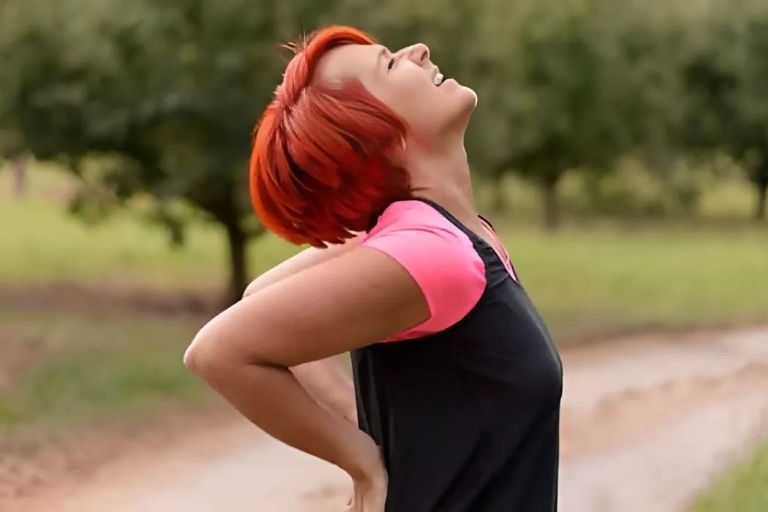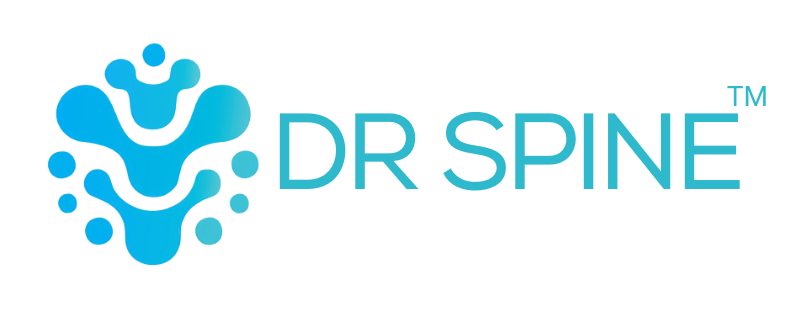Treating Coccydynia Pain Condition
Coccydynia Pain Condition
Coccydynia is referred to as the inflammation of the tailbone or the coccyx, the bony area located between the buttocks right over the anus. It entails tenderness and aches at the tip of the tailbone, leading to difficulties in sitting or walking.

Coccydynia is associated with a deep injury or trauma that manifests later through a fracture of the tailbone. Despite its unassuming size, the coccyx has several vital functions. It serves as the ‘tripod’ offering weight-bearing support to a person in a seated position. Accounts of Coccydynia in individuals can be traced back to the 16th century, it’s an extremely hard issue to diagnose and treat correctly.
The most common symptom of Coccydynia is lower back pain or the ‘tailbone ache’. Which gets worse with prolonged sitting, leaning on the back, standing for too long, and sharp stabbing sensation while trying to get up. Most cases of Coccydynia are resolved within a few weeks time without the need for invasive and conservative treatments.
A multidisciplinary approach involving a combination of physical therapy and medication is usually best suited to deal with issues of the coccyx. In a few rare cases, the pain can get worse despite continued treatment, turning chronic, making it necessary to warrant surgical intervention.
The Best Coccydynia Treatment In Bangalore
The Key Coccydynia Symptoms
The two most common symptoms of Coccydynia are constant pain around the tailbone and soreness. Both make it harder to sit down and stand for prolonged periods. The coccyx serves as the weight carrier while sitting down, thus too much pressure on it while sitting makes the pain worse over time.
People suffering from prolonged Coccydynia find it difficult to get up from a seated position, due to sharp stabbing sensations in their lower back. Getting up from bed in the morning too becomes an arduous task because of the pain that it entails. Lying on the back for a long period aggravates the situation even further. Leading a normal life becomes difficult for patients ailing from Coccydynia.
Some rare symptoms may start to show up once it reaches the chronic stage. These would include issues of the bowels, pain in the tailbone region while running or walking briskly, pain during intercourse, tender buttocks, etc.
Chances of Self-Healing With No Medical Intervention
Most cases of Coccydynia are resolved within a few weeks with little to no medical intervention. However, if the pain persists well beyond the average benchmark then medical intervention becomes necessary. In Coccydynia as with many other ailments, the key to successful treatment lies in early diagnosis. Common symptoms like soreness disappear over time and are not of much concern, prolonged symptoms should be taken seriously and medical advice should be sought out at the earliest possible moment.
Early Diagnosis of Coccydynia
The tailbone is one of the major players in the human body, which aids in sitting by helping to retain balance. Constant pain in the tailbone region makes it increasingly difficult to live a normal life. Diagnosing Coccydynia includes availing methods of MRI, CT Scans, X-rays, and sometimes a SPECT scan.
The Key Causes of Coccydynia
The coccyx is not universally shaped or constituted in the human body. It is a proven fact that people have different coccyx, some have firmer ones, and some are weaker. The ones with a firmer coccyx are less vulnerable and less prone to an erosion of the tailbone over time, the weaker ones are not so lucky. The coccyx does most of the heavy lifting when a person is sitting down, thus, it becomes extremely essential for most bodily functions.
The coccyx is also connected to many important ligaments in the lower back which aids in pelvic and voluntary bowel movements. Coccydynia is not like most ailments, it is caused not just by external factors like trauma and injury but by secondary factors like age and gender to comes into play. Osteoporosis which involves a loss of bone density can cause tailbone injuries by making it more susceptible to trauma and is more common amongst women.
The leading causes of Coccydynia include serious trauma or injury to the tailbone. Secondary causes like gender and age aid it too. It’s now a medically accepted fact that women rather than men are five times more likely to develop Coccydynia. Adults and adolescents rather than children are more prone to issues of the coccyx. Obesity is also a negative factor that puts too much pressure on the coccyx leading to tailbone injuries and Coccydynia.
External trauma is another leading cause behind it, the location of the coccyx makes it extremely vulnerable to injuries. Minor trauma can be caused by prolonged sitting on hard floors and uncomfortable surfaces. The lack of cushioning in the tailbone region leads to an internal injury. Fall-related injuries occur when the back breaks the fall and bears the burn of it. Accidental falling leads the list of causes when it comes to the coccyx.
Non-traumatic Coccydynia is usually caused by degenerative joint issues or a disc hernia. Hypermobility or hypomobility (rapid movements putting stress on the tailbone) can also cause Coccydynia in adults and females. Coccydynia can also be associated with other unusual non-traumatic causes, such as somatoform disorder and other psychological issues. This is, however, not a widely accepted reason, and the medical circle is divided over psychological issues invoking ailments like Coccydynia. The conservative treatment camp finds it absurd and illogical to attribute issues of the coccyx to psychological disorders.
Treatment For Coccydynia: Pain-Killers and NSAIDs
Coccydynia can be treated effectively by employing a plethora of methods that have been invented so far, thanks to the medical of modern medicine. There are two methods of treating issues of the coccyx: the traditional method of administering NSAIDs and pain killers, and the non-invasive alternative methods of Chiropractic adjustments, acupuncture, physical therapy et al. Only when all the above methods have failed can surgery be considered for the same.
NSAIDs or Non-steroidal anti-inflammatory drugs are the most commonly prescribed analgesics for tailbone aches. Opioids are reserved for more acute injuries and not prescribed for coccyx pains.
These, however, come with their own set of side effects which include the likes of dizziness, nausea, internal bleeding, and in extreme cases renal failure. Topical creams and ointments are a better option than oral administration of NSAIDs, it comes with limited to no side effects. The best options include the likes of Chiropractic adjustments, physical therapy, posture correction, and non-invasive kinds.
Non-Invasive Chiropractic Methods For Quick Pain Relief
Well over 90% of cases are solved by administering alternative methods of treatment. Chiropractic adjustments, physical therapy, posture correction techniques, etc. Chiropractic therapy is one of the best alternative methods available right now. A few sessions with a licensed Chiropractor are guaranteed to relieve pain and constant aches. Other relatively simple measures of tackling Coccydynia include:-
– Modified wedge-shaped cushions (coccygeal cushions) relieve the excess stress on the coccyx while the patient is seated, and are available in just about any home goods store.
– Circular cushions (donut-shaped cushions) are also suggested for treating coccydynia, but they can create tension by putting too much pressure on the coccyx.
– An alternative application of heat and ice pack to the problem area is usually very soothing in the initial stages of chronic coccydynia
- Alternative, non-traditional, and non-invasive methods are much better suited for dealing with this particular ailment, not to mention highly effective. They do not with long long-term side effects and do not cause subsequent ailments like NSAIDs or painkillers. Surgery is very rare in such cases and is only employed as the absolute last resort.
Conclusion
Coccydynia is fairly common in women and adults over the age of 35, obesity is another silent cause behind it. The coccyx is acutely vulnerable to injuries and trauma. Its most vital function is to support the weight of the body in a seated position, an injury hinders it from doing so, hampering everyday life.
The coccyx is sort of a meeting point for many important tendons and ligaments. An injury to it entails an injury to either the tendons or the ligaments. One such ligament which can be easily injured controls voluntary bowel movements, thus, it becomes difficult for a patient with Coccydynia to control their bowel function. Osteoporosis is another leading cause of tailbone injuries, it leads to the loss of bone density and is more commonly found in women over 30. A regular dose of calcium should be included in the diet for women once they turn 30. It protects against loss of bone density and aids in making the coccyx less vulnerable to grievous harm in case of an accident or a fall.
Coccydynia is treatable fairly easily through non-invasive methods of therapy and Chiropractic adjustments. These are more holistic approaches oriented towards treating a specific problem area more effectively. They do not bring along a host of side effects like NSAIDs or painkillers and do not cause addiction like the latter either. The medical science community has been slowly but surely making leaps toward treating ailments like Coccydynia solely through non-invasive methods, reserving surgery for extremely rare and serious cases.
Contact us
Dr. Spine Clinic has 4 state-of-art centres in Bangalore. Please reserve your slot by using the form here. Alternatively, you can call 75 5070 5070 to schedule your appointment.

